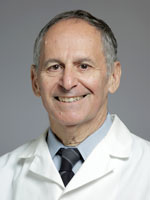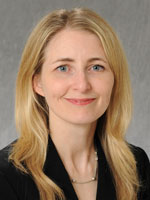Abstracts remain the heart of the ACR/ARHP Annual Meeting, presenting cutting-edge science and the latest basic science and clinical advances.
Attendees will find abstracts everywhere, some so current that they haven’t been published, yet.

Concurrent and plenary sessions are built on the high-quality abstracts that the Annual Meeting attracts every year. But the largest and most vivid display of abstracts comes via posters. But no matter the means of presentation, said David S. Pisetsky, MD, PhD, Professor of Medicine and Immunology at Duke University Medical Center in Durham, NC, and leader of the Abstract Selection Subcommittee in basic science for the Annual Meeting Planning Committee, abstracts offer a vehicle for communication among investigators, whether it’s basic science or clinical issues.
Victoria Shanmugam, MD, head of the Abstract Selection Subcommittee in clinical science for the AMPC, agreed.
“Some of the best opportunities for discussion happen with scientists at their posters, and these are great opportunities to develop new collaborations,” said Dr. Shanmugam, Associate Professor of Medicine and Director of Rheumatology at the George Washington University in Washington, DC.
But with 3,002 abstracts selected this year for plenary, oral presentation or as posters, how can attendees navigate the overwhelming amount of material available for review?
Planning matters, Dr. Pisetsky said. He recommends reflecting on professional goals for the meeting. Figuring out what you want to learn and who you want to meet first makes building a personal schedule easer.
Poster sessions, held in mammoth halls with posters as far as the eye can see, can be overwhelming. But Dr. Pisetsky sees them as an opportunity to personalize the Annual Meeting and make important connections with others in rheumatology. Don’t be shy, Dr. Pisetsky said, because poster presenters want to talk about their work.

“Posters allow direct communication with people in the field and the opportunity to discuss andreview data in a much more free and flexible way, to be honest, than the setting of a podium presentation where you would be time-limited,” he said. “If you want to speak to somebody for an hour, you can do it.”
Even the more formal oral presentations offer chances for interaction. Presenters look forward to audience questions.
“One of the things you don’t want to happen if you’re the speaker is that nobody asks a question,” Dr. Pisetsky said. “If I give a talk and I see people lining up at the microphones, I feel good. But if I give a talk and no one’s at the microphone, I feel bad—like it wasn’t interesting or clear.”
Immunology, always a big topic at the Annual Meeting, will be well represented, but knowledge involving the brain and the connections of the brain to the immune system is a continued area of growth. Other abstract subjects of note include the basic science of pain and its management, the effects of drugs on the immune system, and the latest developments in osteoarthritis.
The Annual Meeting wraps up on Wednesday, Nov. 8, with the late-afternoon session ACR Late-breaking Abstracts.
“One of my personal favorite sessions that I try not to miss is the Late-Breaking Abstracts category,” Dr. Shanmugam said. “Often, the science presented is hot off the presses, and I think this is a really unique forum for highlighting the very latest science in our field.”
